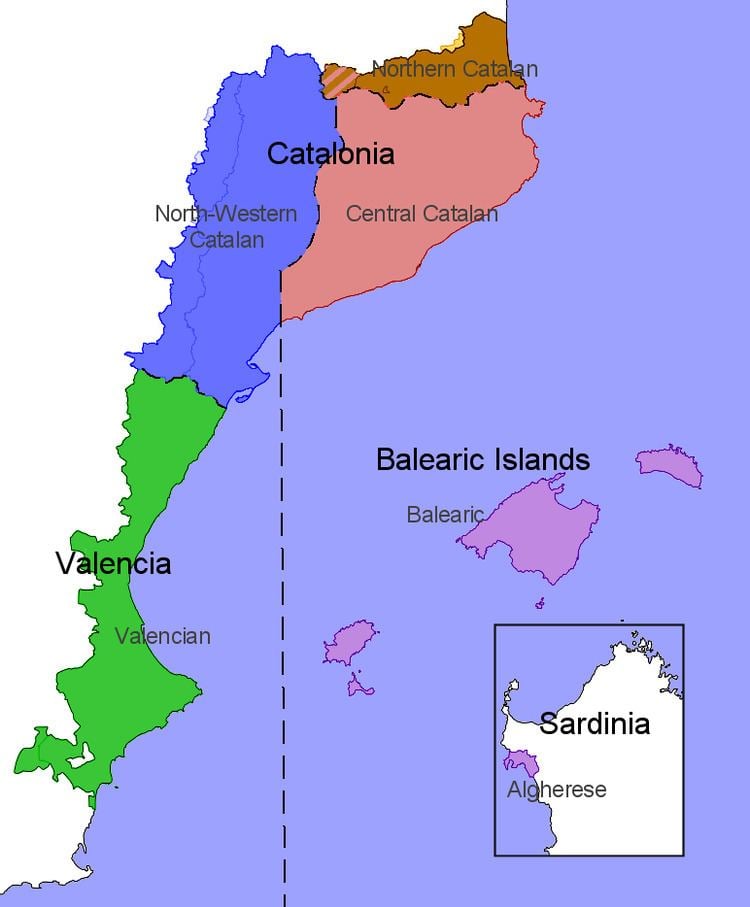 | ||
Central Catalan (Catalan: català central; [kətəˈɫa sənˈtɾaɫ]) is the Eastern Catalan dialect with the highest number of speakers, since it is commonly spoken in densely populated areas such as the whole Barcelona province, the eastern half of Tarragona province and most of the Girona province, except for it is northern part, where a transition to Northern Catalan begins.
Contents
This variety (when free of localisms from Barcelona, Tarragona or Girona) is perceived by most Catalans as the standard form in Catalonia. As such, it is the variety used in most written and audiovisual media, as well as in learning materials.
Empordanese Catalan
In Empordà region of Catalonia we could also distinguish an Empordanese subdialect. As evidenced in writings from the turn of the 19th century, by authors such as Joaquim Ruyra, differences with Barcelonese dialect were higher formerly than nowadays, for instance, regarding the usage of salat article. In the books of Ruyra there are signs of a clear state of diglossia: the more cultured figures, including the narrator, use the standard Barcelona dialect, whilst the local fishermen employ their own dialect.
Some of the differences are:
Hai, Fai, Vai etc. for Haig, Faig, Vaig (I have, I make, I go)
Mon, ton, son etc. for el meu, el teu, el seu (etc. (mine, yours, his) - these variations are not only restricted to the Empordanese Catalan, but are also in use, albeit not often, in Central Catalan; and are generally understood by all Central Catalan speakers.
Con and contes etc. for quan, quant and quantes. (when, which (m.sing, f.plur)
An inversion of the personal pronouns: me, te, se instead of em, et, es (me, you, him).
The use of a 3rd person subjunctive ending in u instead of i: llamp me matu for llamp em mati (strike me down, lit. lightning kill me).
Sebre for saber (to know) with irregular past participle (sapigut for sabut, known).
The Christian colonization of the Balearics was primarily done with settlers from this region and so both dialects share several similarities, most obviously the now practically extinct use of the salat article.
In addition, some synonyms are used more predominantly, for example capir, capieixo, for entendre, entenc (to understand, I understand) and testa for cap (head) which share a closer similarity to modern Italian (capire, capisco / testa) than Standard Catalan.
Text example
Excerpt from the Parable of the Prodigal Son extracted from the works of 19th-century linguist Manuel Milà i Fontanals, who wrote extensively about Catalan dialectal differences:
